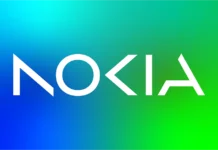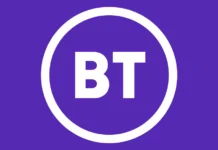NVIDIA has introduced what it calls America’s first AI-native wireless stack for 6G, created in collaboration with Booz Allen, Cisco, MITRE, ODC and T-Mobile. The company said the new AI-RAN stack for 6G marks a major step toward developing wireless networks capable of managing the immense data demands of next-generation connected devices, from autonomous vehicles and robots to augmented-reality glasses and smart cameras.
As the number of connected devices continues to grow, existing networks face escalating pressure to deliver higher capacity and improved efficiency. To meet this demand, NVIDIA and its partners have designed a network model that embeds artificial intelligence into every layer of hardware, software and architecture. The approach supports integrated sensing and communications (ISAC), which merges digital and physical connectivity to advance real-time responsiveness and spatial awareness. AI-RAN, the underlying architecture, merges computing, connectivity and sensing into a single software-defined platform to make radio spectrum use more efficient.
“6G is being built from the ground up with AI at its core — unlocking extreme spectral efficiency, massive connectivity and breakthrough applications,” said Ronnie Vasishta, senior vice president of telecom at NVIDIA. “Working with industry leaders, we’ve created an AI-native wireless stack with advanced features to ensure that America will play an instrumental role in the journey to 6G.”
Only six months after the launch of its AI-WIN project, NVIDIA and its partners completed the first Made-in-America AI-native wireless stack and conducted the first user-to-user phone call on the network at the company’s Santa Clara, California campus. The system integrates NVIDIA’s AI Aerial platform, 5G RAN software from ODC, Cisco’s user plane function and 5G core software, and 6G applications developed by MITRE and Booz Allen. Cisco’s involvement under the AI-WIN initiative is aimed at advancing secure and efficient network connectivity for the AI-driven era.
“Through this partnership, we are pioneering the future of intelligent, secure connectivity — where AI is infused into the fabric of mobile networks and services,” said Masum Mir, senior vice president and general manager of Cisco Provider Mobility. “Together, we are harnessing AI to enable networks that sense, learn and act in real time, empowering service providers to deliver high-value business and consumer services in the AI era.”
Cerberus ODC’s software-defined 5G RAN, powered by NVIDIA AI Aerial, reportedly achieves seven times greater cell capacity and 3.5 times higher power efficiency than legacy systems. The collaboration has also produced several new applications intended to drive the evolution of 6G standards.
Among them is a multimodal ISAC application developed by NVIDIA and Booz Allen, which merges camera vision with radio-frequency sensing for high-precision object detection and tracking in low-visibility settings. MITRE’s AI-powered spectrum agility tool manages real-time spectrum allocation at cell sites to prevent service disruption while improving spectral efficiency. Booz Allen also presented its AI-based R.AI.DIO spectrum sensing technology at NVIDIA GTC in Washington, D.C., capable of detecting and classifying interference or unauthorized signals in real time.
These advances are enabled by NVIDIA’s AI Aerial software libraries and the NVIDIA Aerial Framework, which offers programmable pipelines for integrating third-party tools directly into the AI-RAN stack for 6G. By allowing access to real-time physical-layer data, the framework supports continuous training and reinforcement learning for AI models. Collectively, these developments form the groundwork for telecom’s transition from 5G to 6G, with AI-native networks expected to deliver ultra-efficient edge computing and sensing capabilities to support hundreds of billions of future connections.




















